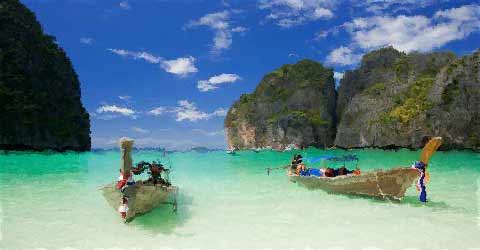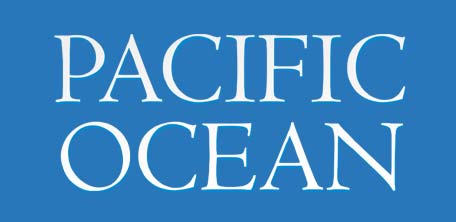
Pacific Ocean is the largest ocean touching the borders of 36 countries. It is also the deepest ocean, the depth of which is even more than the height of the Mt. Everest. Though the name means a peaceful sea, it’s the most dangerous ocean because of the ring of volcanoes at its coastline.
It was during the days of 1521, a Portugal explorer, Ferdinand Magellan, made a voyage from Straits of Magellan positioned along the southern edges of the South American continent, to the Philippines. He then entered a huge water expanse which he found to be quite peaceful and extremely beautiful. Impressed and excited with the scenic beauty and the calmness, he named it “Pacific”, which is derived from the Portuguese word ‘Mar Pacifico’ which means ‘peaceful sea’.
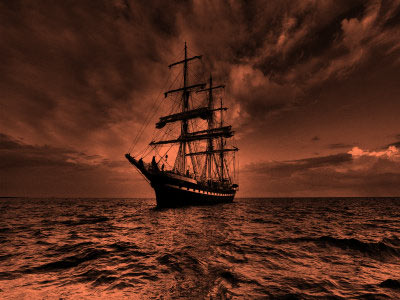
The Pacific Ocean is located between four continents. It has North and South America in the east and Asia and Australia in the west. It stretches from the Bering Sea in the north to the Rose Sea in the south. This ocean touches the borders of a number of countries; Australia, Brunei, Cambodia, Canada, Chile, China, Columbia, Costa Rica, Ecuador, El Salvador, Guatemala, Honduras, Indonesia, Japan, Malaysia, Mexico, New Zealand, Nicaragua, North Korea, Panama, Papua New Guinea, Peru, Philippines, Russia, Singapore, South Korea, Taiwan, Thailand, United States of America, Vietnam and the islands.
It further joins the other oceans through the straits; the Bering Strait connects it with the Arctic Ocean, the Drake Passage, Straits of Magellan and the Panama Canal connect it with the Atlantic Ocean and with the Indian Ocean; it is joint through the passages in the Malay Archipelago which lies in between the Southeast Asia and Australia..
The Pacific Ocean has a size of more than 165 million square kilometres. The longest north to south stretch has a length of 15,500 km and its widest distance is 19,800 km extending east-west from Indonesia to Columbian Coast.
The Pacific Ocean has an average depth of 4,300 metres. The lowest depression is also under the Pacific Ocean; the Challenger Deep in the Mariana Trench is 10,911 metres below the sea level. The Pacific Ocean basin has nearly 450 dormant and active volcanoes forming a ring known as ‘Pacific Ring of Fire’.
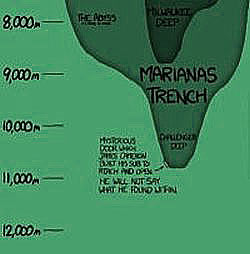
There are two major climatic conditions in the Pacific Ocean; ‘El Nino’ and ‘La Nina’. In Spanish, ‘El Nino’ means ‘the boy’ which is actually referred to the ‘Jesus Child’ and ‘La Nina’ means ‘the girl’. El Nino is the climatic condition when the Pacific Ocean remains warmer than the normal temperature throughout the year. While during La Nina, the situation is reversed with the temperatures falling and the waters are colder than the normal ocean-water temperature. In both the cases, the weather drastically changes all around the world. There is a high air pressure during El Nino in the western Pacific whereas it is low air pressure during La Nina.
The easterly trade wind is the reason behind both the disastrous changes. When there is high pressure in the eastern Pacific, the easterly trade winds are strengthened. It then blows out the warm water on the surface of the ocean thus letting the cold water that lied underneath to replace the surface. That is why, because of the trade wind, the ocean remains colder than the normal temperature. This is how El Nino is created.

On the other hand, when the pressure lowers in the eastern Pacific, the easterly trade wind weakens which results in a stationary motion of the wind. Thus the water remains as it is and gains more heat. Then the temperature rises higher than the normal temperature of the ocean surface water. Thus, La Nina is created.
Though the climatic changes due to both of them, play a very important role in the global climate, one very interesting impact lies on the productivity of fish. During El Nino, due to the warm water the food chain is disrupted and thus the productivity is very less. On the other hand, the fishing productivity increases during the cold year of La Nina. La Nina results in more hurricanes in the Pacific and lesser in Atlantic whereas during El Nino, hurricanes are more frequent in the Atlantic and less in the Pacific.
The International Date Line – the imaginary line from the North Pole to the South Pole, which demarcates one day from the other, passes through the middle of the Pacific Ocean at 180° longitude.
There are also millions of animals residing in the water of Pacific Ocean. Most of them are still unknown to us but a few extraordinary kinds of fish are quite interesting to know. Some of them are:-
-
Cocinero, which has these black stripes at their sides as identification marks. They are carnivorous and live on smaller fishes. They are also known as Barred Jack or Striped Jack. They are found in the coastal waters of the eastern Pacific Ocean.
-
Hawaiian ladyfish also known as the giant herring has a slender body and is silver in colour. It has a single dorsal fin and a strong forked tail. It has a length of 30-60 cm and weighs nearly 2kg.
-
Bering flounder lives in the northern Pacific. It is a flatfish and lives at a depth of nearly 400m and is 30cm in length. Apart from these rare fishes, the Pacific Ocean also has the varieties of common fishes such as salmon, sardines, mackerel etc.
-
Yeti Crab is one of those peculiar looking species found in the oceans. It belongs to the class of crustacean which includes the lobsters, crabs, crayfish etc. Most of its body is covered with fur and it is also known as “furry lobster”. They spend all their life on the ocean floor and because of which they are blind.
-
There is a Japanese common squid known as Japanese flying squid which is found in the northern coast of Pacific Ocean. It has a weight of 500 grams and has a maximum length of 50 cm. It has eight arms and two tentacles. Moreover, a Japanese flying squid has three hearts.
-
A type of whale which is known as Gray Whale is also found in the Pacific Ocean. It is nearly 14m long and weighs more than 30,000kg. A female gray whale is larger than a male gray whale. This creature has a speed of up to 9km/h.
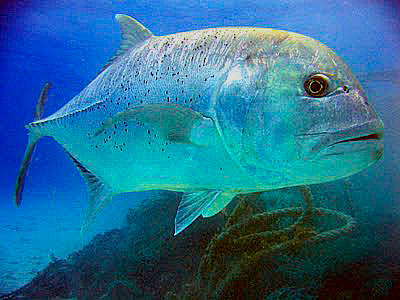
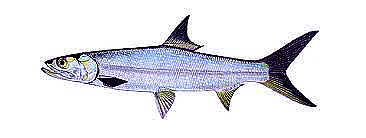
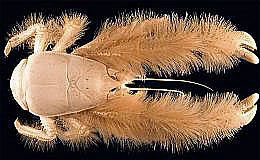
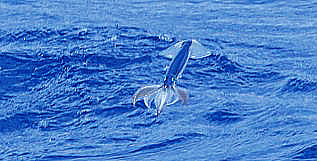
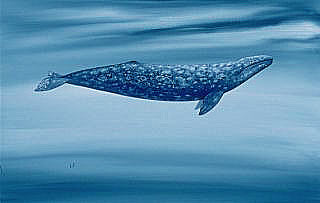
Of course, there are numerous islands in the Pacific Ocean. It is the biggest ocean and also has the largest number of islands among all the oceans. The Pacific has nearly 25,000 islands and 17 among them are independent nations: Australia, Fiji, Japan, Kiribati, Marshall Islands, Mironesia, Nauru, New Zealand, Palau, Papua New Guinea, the Philippines, Samoa, Solomon Islands, Taiwan, Tonga, Tuvalu and Vanuatu. Out of these, New Guinea is the largest with an area of 785,168sq.km and Nauru is the world’s smallest island which covers an area of just 21 sq km.
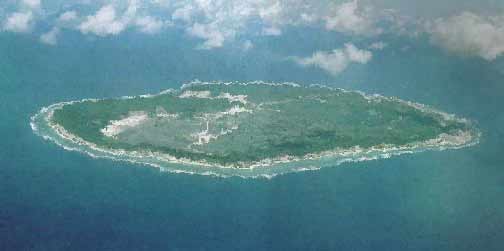
There are sixteen seas that flow into the Pacific Ocean. They are the Philippine Sea, Sea of Japan, Arufara Sea, the Yellow Sea, the Java Sea, the Timor Sea, the East China Sea, the Tasman Sea, the Coral Sea, the Sulu Sea, the South China Sea, the Banda Sea, the Molucca Sea, the Koro Sea, Sea of Chiloé and the Sea of Okhotsk.
Apart from these seas, Pacific Ocean is also home to other forms of water bodies such as straits, bays and gulfs. Some of the major water bodies among them are; the Strait of Malacca, The Taiwan Strait, the Cook Strait, the Gulf of Carpentaria, the Gulf of Thailand, the Gulf of Alaska, Korea Bay and Tokyo Bay.
